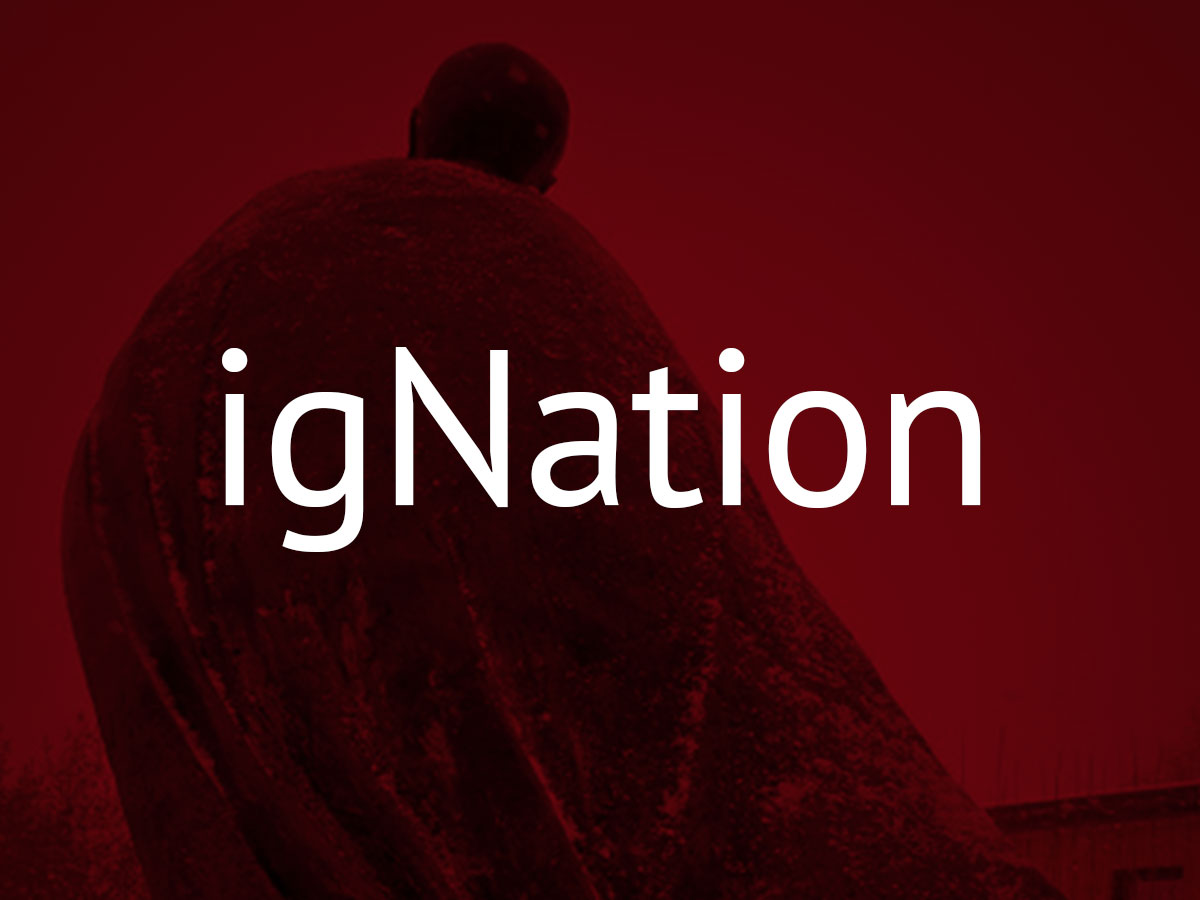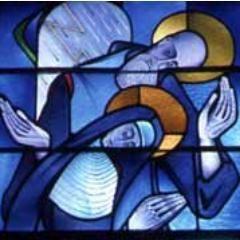A 2017 Lenten Bookshelf: A Second Look at a Six Fold Path: Part 2 – Benedictine

By the solemn forty days of Lent the Church unites herself each year to the mystery of Jesus in the desert.
(From Article 540 of the Catechism of the Catholic Church)
In this six-part series, Kevin Burns selects a book for each week of Lent. Each book speaks to one of the great traditions within Catholic culture. Each book also shows how its author struggles to apply that tradition. Six different approaches to the same journey through the desert of Lent to the Easter promise of resurrection.
Week Two: Judith Valente explores the Benedictine path.
 Atchison blue is a colour found in the work of a German-born American glass maker, Emil Frei. In 1947, he crafted a set of windows for the chapel at the Benedictine Monastery of Mount St. Scholastica in Atchison, Kansas. Frei integrated several shades of blue into his glass windows which, over time, were bleached by the harsh Kansas sunlight, transforming them into a single shade of blue/gray which is now known as “Atchison blue.”
Atchison blue is a colour found in the work of a German-born American glass maker, Emil Frei. In 1947, he crafted a set of windows for the chapel at the Benedictine Monastery of Mount St. Scholastica in Atchison, Kansas. Frei integrated several shades of blue into his glass windows which, over time, were bleached by the harsh Kansas sunlight, transforming them into a single shade of blue/gray which is now known as “Atchison blue.”
Atchison Blue is also the title of an engaging exploration of Benedictine spirituality through lives of the community nuns who live at Mount St. Scholastica. Their daily lives revolve around the chapel with its uniquely blue-tinted windows. Judith Valente covers the religion “beat” for PBS in the United States and wrote sections of her book while on several retreats at the Mount. She wanted to know more about the ancient Rule of St Benedict and how it continues to shape the life of this community today.
The historian, James G. Clark tells us that the Rule was influential because it not only guided the Benedictines, but from the sixth century onwards it became “a common fund of customs” that informed the life of monasteries in general. “It was not an institutional structure that ensured it endured, and in time prevailed, but the nature of the code itself, its clarity, scope and the comparative simplicity of its liturgical, disciplinary, communal and individual demands.” (The Benedictines in the Middle Ages, Boydell Press, 2011, p. 59, my emphasis.)
Valente visited the Kansas monastery often, to listen, watch, and converse with the women in the community. In the chapter “Night Shift” she describes an evening visit on Shrove Tuesday. She has entered the infirmary wing of the monastery where the frail and elderly members of the community are cared for. She has a playful conversation with one of the sisters who proudly announces she has just completed a complex jigsaw puzzle of the Virgin Mary. A sister sitting next to Valente whispers conspiratorially, “She gets a lot of help from the nurses.”
Valente continues:
Everyone is talking and having a grand time, filling one another’s cups with cocoa and peppermint schnapps. I think of the care The Rule takes in assigning certain hours for rest, for reading, for relaxation, and for how the Benedictines view leisure too as holy. Then, at the appointed time the laughter winds down. The room becomes silent. In front of the fireplace lay fronds from last year’s Palm Sunday Mass.
Sister Albertina Hermann lights the hearth, and one by one the sisters cast these palm branches into the flames. They will become the ashes for tomorrow’s service. We say a prayer, promising to give “strength and support to one another on the Lenten journey to the Easter Triduum.” We sing, “All creatures of our God and King, lift up your voice and hear us sing. Alleluia, Alleluia.” It is the last time the alleluia will be uttered until Holy Saturday. For the rest of the evening until the end of Ash Wednesday, the next day, there is silence in the monastery. Laughter to silence. Leisure to prayer. Life to death. Death to life.”
Valente explains the impact of researching and writing a book about the Benedictines:
Ultimately, I would arrive at a deeper understanding of the necessities of prayer, contemplation, and silence. I would rebuild my faith within a Church that seemed increasingly withdrawn from the day-to-day realities of life. And I would grasp the meaning of two words that came to define my struggle for deep personal change: conversio morum, what the Benedictines call conversion of life. Conversio is like the slow steady process that transformed the choir chapel windows into their exceptional blue color.
Atchison Blue – A Search for Silence, a Spiritual Home, and a Living Faith by Judith Valente is published by Sorin Books/Ave Maria Press, 2013.
For a 2-minute 48-second virtual tour of the Mount St. Scholastics Monastery in Atchison, Kansas click HERE:
Next Week:
Dan Horan OFM on the Franciscan path: “One way the Franciscan tradition should shape or influence our lives is to remind us that our relationship with God is not all that different from our other forms of relationship.”




DX Lean
Posted at 14:21h, 30 NovemberThanks for any other excellent article. The place else
may just anybody get that kind of info in such a perfect means of
writing? I have a presentation subsequent week, and I am on the search for such info. https://dxlean.org/